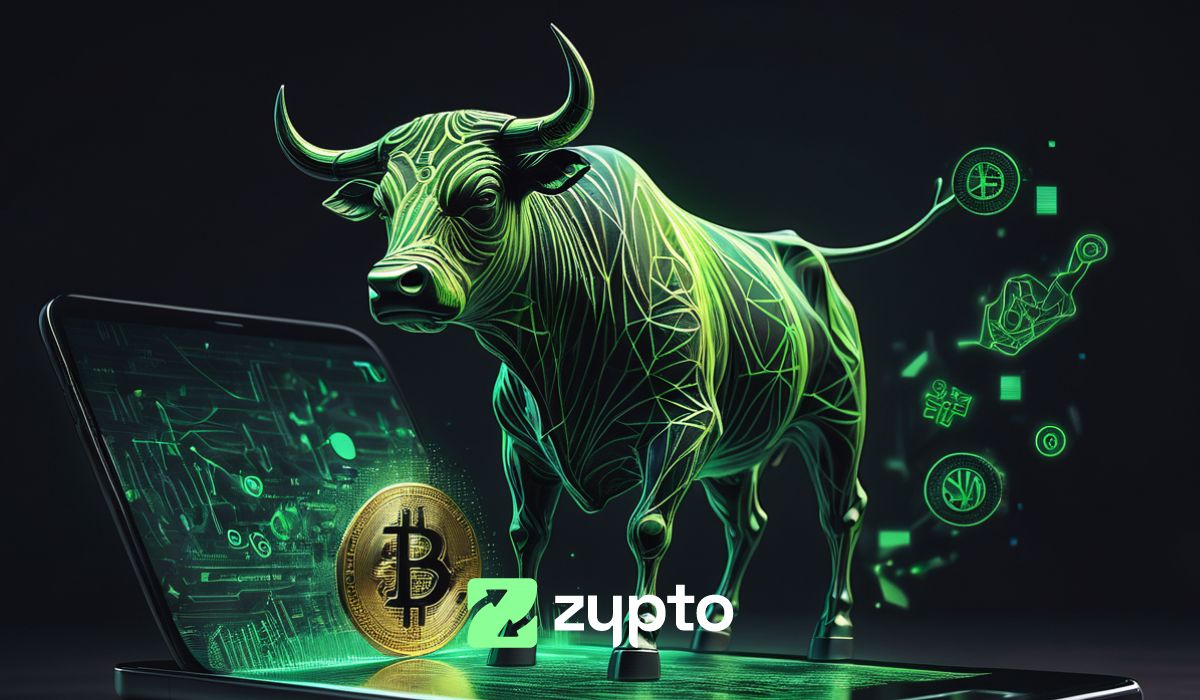Crypto arbitrage refers to the process of taking advantage of price discrepancies for the same cryptocurrency on different exchanges or platforms. These differences often arise due to variations in liquidity, trading volume, or regional demand.
Imagine Bitcoin is selling for $40,000 on Exchange A but costs $40,300 on Exchange B. A trader engaging in crypto arbitrage trading can buy Bitcoin on Exchange A and immediately sell it on Exchange B, pocketing the $300 difference (minus fees).
This form of trading doesn’t rely on predicting market trends; instead, it focuses on exploiting inefficiencies in pricing across platforms.
How Does Crypto Arbitrage Trading Work?
To understand how crypto arbitrage trading works, let’s look at the process:
Identifying Price Discrepancies
Traders monitor multiple cryptocurrency exchanges in real time to find price differences for the same asset. This can be done manually or using automated tools designed for arbitrage trading.
Executing Trades Quickly
Traders must act fast since price gaps often close within seconds or minutes. They buy the cryptocurrency on the platform with the lower price and sell it on the one with the higher price almost simultaneously.
Factoring in Fees and Timing
Trading fees, withdrawal costs, and potential delays in transactions can reduce profits. Experienced traders account for these factors before executing trades to ensure the arbitrage opportunity remains worthwhile.

Types of Crypto Arbitrage Trading
Crypto arbitrage can take various forms, each with its own advantages and challenges.
Simple Arbitrage
The most straightforward type involves buying an asset on one exchange and selling it on another. An example is buying Ethereum on Exchange A at $1,800 and selling it on Exchange B at $1,850.
Triangular Arbitrage
This involves trading across three different cryptocurrencies on the same exchange. An example is trading Bitcoin for Ethereum, Ethereum for USDT, and USDT back to Bitcoin, profiting from price differences in the conversion rates.
Statistical Arbitrage
This type of arbitrage uses algorithms and statistical models to identify and exploit price differences across multiple exchanges. It often requires advanced tools and expertise.
Decentralized Arbitrage
This focuses on price differences between decentralized exchanges (DEXs) and centralized exchanges (CEXs). An example is taking advantage of lower fees or faster transactions on DEXs like Uniswap and reselling on CEXs.
Why Is Crypto Arbitrage Trading Popular?
Several factors contribute to the growing popularity of crypto arbitrage trading.
- Accessibility: With numerous exchanges worldwide, opportunities for arbitrage are abundant.
- Low Risk: Since arbitrage relies on price inefficiencies rather than market predictions, the risks are generally lower.
- Automation:Many traders use bots to scan for opportunities and execute trades, reducing manual effort and increasing efficiency.
- Profit Potential: Even small price gaps can lead to substantial profits when executed at high volumes or frequencies.
Risks and Challenges of Crypto Arbitrage
While crypto arbitrage trading can be lucrative, it’s not without its challenges. Here are some potential pitfalls to arbitrage trading.
Transaction Fees
The fees for trading, withdrawing, and transferring cryptocurrencies can quickly eat into profits. It is always important to calculate the net profit after accounting for these costs.
Timing Delays
Crypto markets move quickly, and delays in transferring funds between exchanges can cause you to miss opportunities. On-chain transactions (e.g., in decentralized arbitrage) may be subject to network congestion.
Regulatory Barriers
Some exchanges restrict access based on geographic location, which may limit your ability to participate in arbitrage. Verify the legality of arbitrage trading in your jurisdiction.
Liquidity Issues
Smaller exchanges may not have enough liquidity to execute large trades without impacting the price. Ensure the platforms you trade on can handle the volume you intend to trade.
Volatility Risks
While arbitrage focuses on price differences, sudden market movements can still impact your trades. A rapid price swing on your selected cryptocurrency may negate potential profits.

How to Get Started With Crypto Arbitrage Trading
Here’s a step-by-step guide to help you begin.
- Identify and choose reputable platforms with significant trading volume and minimal fees. Ensure they support the cryptocurrencies you want to trade.
- Create and verify accounts on multiple exchanges and complete KYC requirements to ensure smooth transactions.
- Fund your wallets by depositing funds into your accounts to start trading. Spread your capital across exchanges to minimize transfer delays.
- Leverage arbitrage trading software or bots to monitor markets and execute trades efficiently. Examples include Cryptohopper, Bitsgap, and Coinrule.
- Stay informed about trading and withdrawal fees on each platform. Remember to check the average transaction times for the blockchains you’re using.
How Profitable Is Crypto Arbitrage Trading?
Profitability in crypto arbitrage depends on factors like:
- Capital: Larger volumes yield higher absolute profits.
- Speed: Quick execution minimizes the risk of price gaps closing.
- Fee Awareness: Understanding fee structures helps maximize net profits.
While the margins for individual trades might be small (e.g., 1-3%), they can add up significantly through high-frequency trading.
Crypto Arbitrage Trading vs Traditional Arbitrage
Although both strategies involve exploiting price differences, there are key distinctions.
Speed: Crypto markets operate 24/7, offering more frequent arbitrage opportunities compared to traditional financial markets.
Decentralization: Crypto arbitrage can include trades on decentralized platforms, adding complexity and opportunity.
Volatility: Price swings are more pronounced in cryptocurrencies, increasing the frequency of price gaps.
How Zypto Can Simplify Crypto Arbitrage Trading
Navigating crypto arbitrage trading can be challenging, especially for beginners. The Zypto Crypto App provides an all-in-one platform that simplifies crypto trading across multiple exchanges. With its user-friendly interface, real-time price monitoring, instant transactions, and support for over 1,000 cryptocurrencies, Zypto App ensures you can spot arbitrage opportunities faster. Additionally, its secure wallet system, multi-chain swaps, and low transaction fees make it an ideal choice for executing profitable trades seamlessly.
Conclusion
Crypto arbitrage trading is an innovative and potentially profitable strategy for traders looking to capitalize on inefficiencies in the crypto market. By understanding what crypto arbitrage is and how it works, you can take advantage of price differences across exchanges while minimizing risks.
However, success in crypto arbitrage requires thorough research, preparation, and the right tools to navigate the fast-paced world of cryptocurrency. Whether you’re a beginner or an experienced trader, the opportunities in crypto arbitrage are as dynamic as the market itself.
Have you ever tried crypto arbitrage trading? What was your experience like? Let us know your thoughts below!

FAQs
What is crypto arbitrage?
Crypto arbitrage is the process of exploiting price differences for the same cryptocurrency on different platforms to make a profit.
How does crypto arbitrage trading work?
It involves buying a cryptocurrency on one exchange where it’s priced lower and selling it on another where it’s priced higher, often within seconds or minutes.
Is crypto arbitrage trading risky?
While considered low-risk compared to other strategies, challenges like fees, timing delays, and market volatility can impact profitability.
Can beginners start crypto arbitrage trading?
Yes, with proper research, tools, and a clear understanding of the process, beginners can explore this strategy. Automated bots can help simplify trading.






























0 Comments